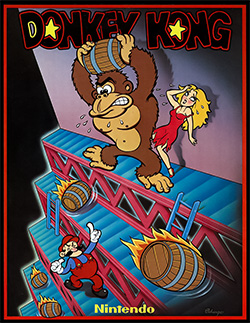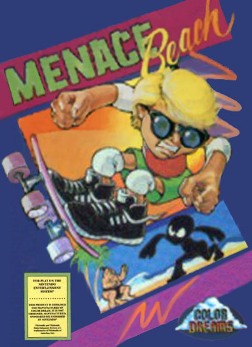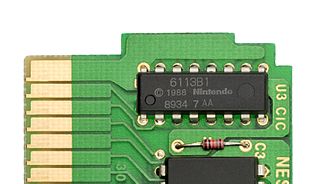
Action 52 is an unlicensed multicart video game compilation developed by Active Enterprises for the Nintendo Entertainment System and by FarSight Technologies for the Sega Genesis. The NES version was released in 1991, followed by the Genesis version in 1993. The multicart consists of 52 games in a variety of genres, mostly scrolling shooters and platformers. The "featured" game is The Cheetahmen, which was part of Active's failed attempt to create a franchise similar to the Teenage Mutant Ninja Turtles. Active Enterprises was legally incorporated in The Bahamas, but the offices and development were located in Miami, Florida while the company's product warehousing was located in Orlando, Florida.
In video game parlance, a multicart is a cartridge that contains more than one game. Typically, the separate games are available individually for purchase or were previously available individually. For this reason, collections, anthologies, and compilations are considered multicarts. The desirability of the multicart to consumers is that it provides better value, greater convenience, and more portability than the separate games would provide. The advantage to developers is that it allows two or more smaller games to be sold together for the price of one larger game, and provides an opportunity to repackage and sell older games one more time, often with little or no changes.

Wisdom Tree, Inc. is an American developer of Christian video games. It was an offshoot of Color Dreams, one of the first companies to work around Nintendo's 10NES lockout chip technology for the Nintendo Entertainment System. Color Dreams formed the Wisdom Tree subsidiary in 1990 in an effort to circumvent Nintendo's restrictions against publishers of unlicensed video games for the NES by selling their games at Christian book stores which was not subject to pressure by Nintendo.
In video game parlance, a famiclone is a hardware clone of the Nintendo Entertainment System (NES), known in Japan as the Family Computer or Famicom. They are designed to replicate the workings of, and play games designed for, the NES and Famicom. Hundreds of unauthorized clones and unlicensed game copies have been made available since the height of the NES popularity in the late 1980s. The technology employed in such clones has evolved over the years: while the earliest clones feature a printed circuit board containing custom or third party integrated circuits (ICs), more recent (post-1996) clones utilize single-chip designs, with a custom ASIC which simulates the functionality of the original hardware, and often includes one or more on-board games. Most devices originate in China and Taiwan, and less commonly South Korea. Outside China and Taiwan, they are mostly widespread across emerging markets of developing countries.

The Power Player Super Joy III is a Nintendo Entertainment System/Famicom video game console clone. It is notable for legal issues based on the violation of intellectual property rights held by Nintendo and its various game licensees. Manufactured by Sinango, the Power Player has been sold in North America, Brazil, Europe, Asia, and Australia.

Donkey Kong is a 1981 arcade video game developed and published by Nintendo. As Mario, the player runs and jumps on platforms and climbs ladders to ascend a construction site and rescue Pauline from a giant gorilla, Donkey Kong. It is the first game in the Donkey Kong series and Mario's first appearance in a video game.
Tengen Inc. was an American video game publisher and developer that was created by the arcade game manufacturer Atari Games for publishing computer and console games. It had a Japanese subsidiary named Tengen Ltd..

Menace Beach is a video game released for the Nintendo Entertainment System by Color Dreams in 1990. Like all Color Dreams games, Menace Beach was not officially licensed by Nintendo. It was re-released as part of the Maxivision 15-in-1 multicart.
GameKing is a brand of handheld game consoles, designed and developed by Timetop and manufactured by Guangzhou Panyu Gaoming Electronics Co., Ltd, in 2003, for the Hong Kong consumer market. The brand has three consoles, the GameKing I, the GameKing II and the GameKing III. A fourth console, the Handy Game, was produced by Timetop and shares some branding, but otherwise has little to do with the GameKing franchise.
Thin Chen Enterprise, also known as Sachen, was a Taiwanese company that developed several original games for the Nintendo Entertainment System, Mega Drive, Game Boy and other early cartridge-based handheld systems such as the Watara Supervision and Mega Duck. With the exception of the latter two handhelds, all of Thin Chen's games were produced without license from the console manufacturers. The company produced at least 70 unique games for the NES and Famicom and at least 32 for the Game Boy, making it the most prolific unlicensed developer and publisher for both consoles. The company also produced its own Nintendo Entertainment System hardware clones, such as the Q-Boy. Many of its games were released in an unfinished state, and received largely negative critical response.

Home Entertainment Suppliers Pty. Ltd. is an Australian company that distributes computer games and gaming equipment. HES' offices are based in Riverwood, Sydney. HES's founder and managing director is Sebastian Giompaolo.
NTDEC, was a Taiwanese manufacturer of cartridges, accessories and original games for NES and Famicom. For both they also manufactured converters to play Famicom titles on the NES. The company was founded in 1983, but in the 80's its activities were and are still today unknown.

Indiana Jones and the Temple of Doom is an action game released in 1988 for the Nintendo Entertainment System. The game is based on the arcade game and film of the same name. The resulting product differed from the arcade version in several aspects, but kept the same underlying premise and style.

The Nintendo Entertainment System (NES) is an 8-bit home video game console produced by Nintendo. It was first released in Japan on July 15, 1983, as the Family Computer (Famicom). It was released in US test markets as the redesigned NES in October 1985, and fully launched in the US the following year. The NES was distributed in Europe, Australia, and parts of Asia throughout the 1980s under various names. As a third-generation console, it mainly competed with Sega's Master System.

The Retro Duo is a handheld game console developed by Retro-Bit and distributed by Innex, Inc. It plays game cartridges for the Nintendo Entertainment System and Super Nintendo Entertainment System. It plays North American, European and Japanese games and has the highest compatibility of any other clone system. S-video is compatible when playing SNES games. The console is not licensed by Nintendo and it's not fully compatible with every game released for the two game systems, but the majority of games function properly. While it has only been released in Canada and the United States, it can still be used in Europe and Japan with a power plug adapter. The console is compatible with official and third party SNES controllers.

Pegasus is a clone of the Nintendo Famicom that was sold in the Czech Republic, Poland, Indonesia, Bosnia-Herzegovina and the Federal Republic of Yugoslavia during the early to mid 1990s.

The Checking Integrated Circuit (CIC) is a lockout chip designed by Nintendo for the Nintendo Entertainment System (NES) video game console in 1985; the chip is part of a system known as 10NES, in which a key is used by the lock to both check if the game is authentic, and if the game is the same region as the console.

The Nintendo Entertainment System Game Pak is the software storage medium for the Nintendo Entertainment System, part of the Nintendo's Game Pak series of ROM cartridges.

The Nintendo Entertainment System (NES), an 8-bit third-generation home video game console produced by Nintendo, had numerous model variants produced throughout its lifetime. It was originally released in 1983 as the Family Computer in Japan, with design work led by Masayuki Uemura. Nintendo intentionally redesigned it as the NES in North America in an attempt to avoid the stigma of video game consoles lingering from the video game crash the same year; while it was initially conceptualized as a home computer, it was ultimately modeled after a videocassette recorder (VCR) for its debut there in 1985. Nintendo subsequently exported the NES to Europe and Oceania via local distributors.














